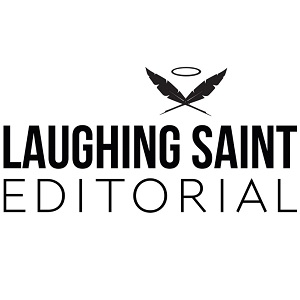For some reason, I find myself adding a lot of commas before the word "which" lately. It's just a fluke; I don't think it's due to a moral failing of our educational system or a lack of personal fortitude on behalf of the writers I'm working with.
But it does make me sad that I'm not still in the classroom teaching students my awesome method for remembering when and why, more or less, to use a comma before "which" and when to use "which" rather than "that" in the first place. So I've decided to share my method here instead! I hope that all you undergraduate writers and writing teachers will find it useful. Remember: sharing is caring!
Don't Trust Your Gut
The conversation usually began like this: I'd ask my students how they know they should use "that" instead of "which." More often than not, they would have no concrete idea of why; they just used their intuition, if they were native speakers, and while trusting your gut may have been good enough for Stephen Colbert, it's not sufficient for command of the rules/common standards of US English.
Here's one of my favorite examples to use in class:
This spacesuit, which I wore yesterday, was made in 1965. It is kept in the museum that I told you about last night.
For not-entirely-arbitrary reasons, in US English "which" is a non-restrictive relative pronoun in contexts like these, and "that" is a restrictive relative pronoun (as opposed to being a demonstrative, as in "Look at that spacesuit," but I digress). Accepting that seemingly-but-trust-me-not-totally-arbitrary rule is step one.*
What Makes "Restrictive" Restrictive?
What, after all, is being restricted? In short: the meaning of the word that the pronoun stands for. In the first sentence, when we start the second clause, after the comma, we need to re-establish the grammatical subject, and it sounds clunky to say "This is the spacesuit, the spacesuit I wore yesterday," so we use a pronoun to cut down on the wordiness (and yeah, you could remove "which" and "that" altogether from these sentences, but you're just eliding the re-establishment of the grammatical subject if you do so, and I'm trying to explain the grammar to you, so play along with me here). In the case of the first sentence, the use of "which" should indicate that the additional information about the object being described--the spacesuit--is information that is not necessary for identifying the object. That is, the fact that I wore the spacesuit yesterday does not restrict the meaning of "spacesuit" in this sentence to the object being described; it is merely a further detail, not a detail that distinguishes this spacesuit from any other. The restricting/defining information in that sentence is probably (depending on context) the fact that it was made in 1965.
Now, what about that second sentence? Well, the fact that I've used "that" should indicate that the additional description of the object being described--the museum--distinguishes or restricts the meaning. Without that additional information--namely, the fact that I told you about the object (in this case, the museum) last night--you could be confused about which museum I'm referring to. The fact that I had to add extra information to restrict or specify the meaning of "museum" means that I need to use the restrictive relative pronoun "that." If I'd used "which" in the second sentence, it would suggest that we both already knew which museum we were talking about, and the fact that I told you about it last night would have been already-assumed or non-restrictive information.
These are just some basic examples. Distinguishing restrictive from non-restrictive can get pretty tricky. For example, restrictiveness can also be a property of other types of appositive phrases that aren't headed up by a relative pronoun, but that's a bridge to cross on another day and in another post...
If You Have to Trust Your Gut, Follow This Rule
What I used to tell my students was that if they could understand when to use "which" and when to use "that," they'd have better control of the language. But, since the restrictive/non-restrictive principle gets tricky, I also gave them what I called the back-door rule. If they couldn't figure it out but had a pretty good feeling in their guts that they should use "that" or "which" in any given case, they could remember to use commas before "which" using this simple rule, which (hey, hey!) I drew on the board:
This worked particularly well for the science-minded in the class. It's a basic chiasmus, or crossing of opposites to achieve balance. If you think of non-restrictive and no comma as being "negative" and their opposites--the use of a comma and the use of restriction--as being "positive," then you can easily remember that the positive always goes with the negative. Restrictive "that" should have a negative--no comma. And the negative non-restrictive "which" should always include or add a comma. You might be relying on your gut to tell you whether to use "which" or "that," but at least your punctuation will be right, and most instructors grading papers (whether they're teaching history, physics, or English) who get bent out of shape about such things only care about whether the punctuation is correct because, frankly, they couldn't distinguish restrictive from non-restrictive if their lives depended on it.
So there you have it! Here's hoping my neat little diagram is helpful!
*One important note: the rules about using "that" or "which" exclusively as restrictive or non-restrictive relative pronouns, respectively, don't apply so uniformly in UK English. They're a bit more liberal with "which" as a restrictive relative pronoun out there!
